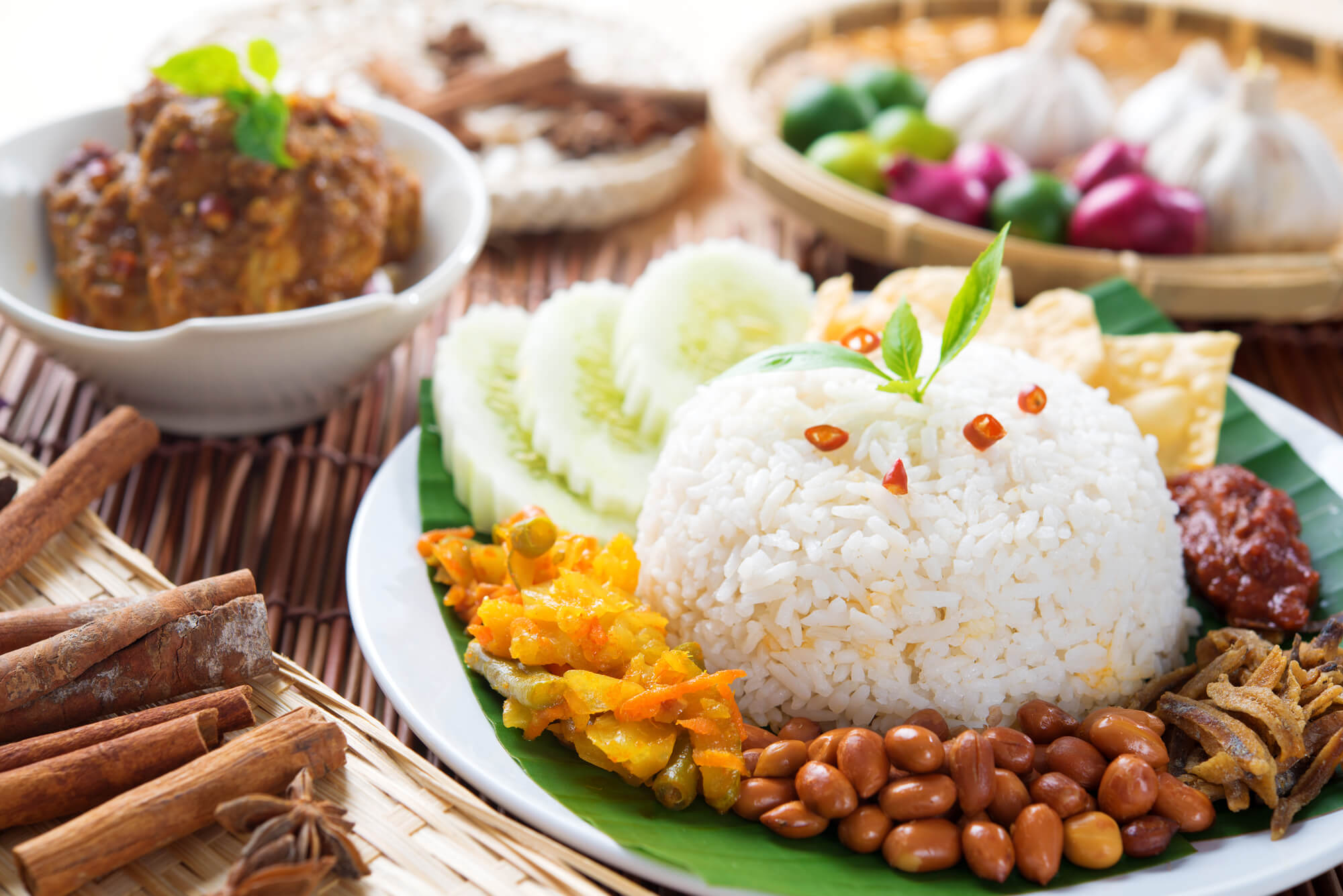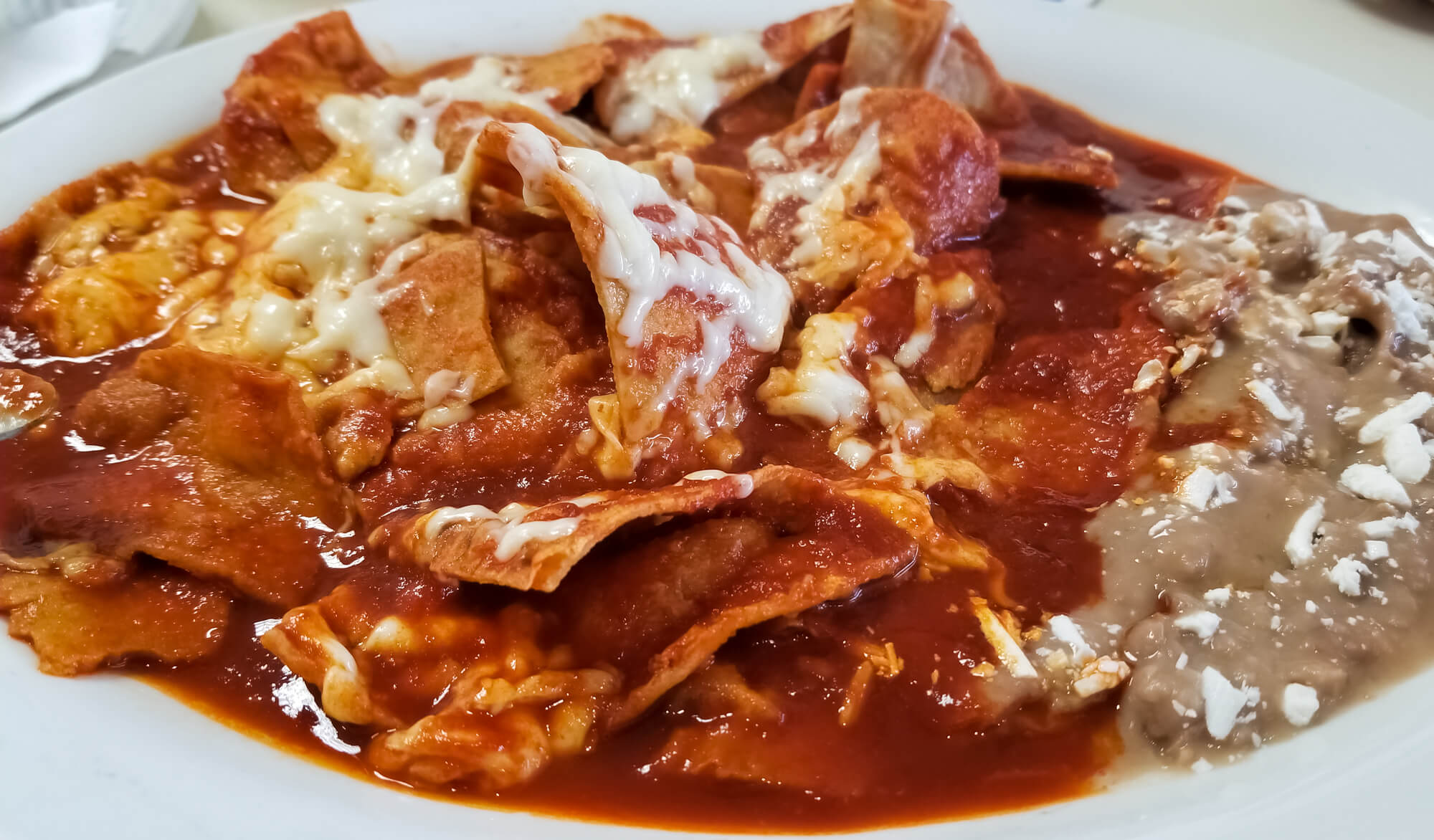Nasi lemak is a popular dish in Malaysia, Indonesia, and Singapore. It consists of rice cooked in coconut milk and pandan leaf, which gives it a distinctive aroma and flavor. The rice is typically served with a variety of side dishes, such as fried anchovies, roasted peanuts, cucumber slices, hard-boiled eggs, and spicy sambal sauce.
Nasi lemak is often eaten for breakfast, but it can also be enjoyed as a snack or a full meal at any time of day. It is a beloved national dish in Malaysia and is enjoyed by people of all ages.
Ingredients
Sambal Ikan Bilis
Rice and Assembly
Instructions
Sambal Ikan Bilis
Chop chiles de árbol into ½” pieces, making sure to discard as much of the seeds as possible. Prepare a small pot with boiling water, and place chiles in water. Lower to low-medium and let simmer for 30 minutes to soften. Then drain the chiles.
While chiles are cooking, simmer oil and peanuts in a saucepan over medium heat. Cook until peanuts are browned lightly – no more than 8-10 minutes.
Use a slotted spoon to transfer nuts to paper towels to drain; set aside for serving.
Add anchovies to same oil used to cook peanuts, and cook until golden brown and crisp. No more than 3-4 minutes.
Transfer to fresh paper towels; let cool. Set ¼ cup oil aside.
Pulse shallots, garlic, and ¼ cup fried anchovies together (while saving the remaining anchovies for serving) in a food processor until a smooth paste is formed.
Transfer paste to a medium bowl. Add chiles to food processor and pulse until smooth.
Transfer chile purée to a separeate, small bowl.
Heat reserved oil in a medium skillet over medium-high until shimmering.
Add shallot mixture and cook, stirring, until slightly darkened in color and fragrant. This should only take 2 minutes, tops.
Mix in chile purée and cook, stirring often, until it starts to stick to bottom of skillet, about 3 minutes.
Reduce heat to low. Add sugar, tamarind concentrate, and ¼ cup water and cook, stirring often, until sambal is much darker in color and thickened, 25–35 minutes.
Assembly
Place rice in a medium saucepan and pour in cold water to cover; swirl with your hands to rinse away some of the starch.
Drain and repeat process 2 more times. Water should be just slightly cloudy at this point.
Place rinsed rice back into saucepan and cover with 2½ cups cold water; stir in salt. Gather pandan leaves together and tie into a knot; add to pan.
Bring rice to a simmer over medium-high heat. Cover pan and reduce heat to low; cook 18 minutes.
Remove lid and stir in coconut milk. Cover, remove from heat, and let sit 5 minutes.
Meanwhile, bring a small saucepan of water to a boil. Carefully lower eggs into water.
Cook 10 minutes, then transfer to a bowl of ice water and let cool. Peel eggs and cut in half lengthwise.
Combine sambal ikan bilis, reserved fried peanuts, and reserved fried anchovies in a medium bowl and toss to evenly coat. Scoop a generous ½ cup sambal mixture into a 12-oz. bowl.
Top with 1½ cups rice and pack into bowl with a rubber spatula to compress.
The bowl should be filled to the rim. Place a slightly larger bowl upside down over bowl of rice.
Invert so larger bowl is now on the bottom; lift off smaller bowl.
You should have a dome of rice and anchovy mixture nestled in the center of the larger bowl.
Arrange 8 cucumber slices around rice dome, overlapping slightly to make a semicircle.
Add 2 egg halves to side of rice with no cucumber slices; season yolks lightly with soy sauce.
Repeat with remaining rice, sambal mixture, cucumbers, and eggs to make 3 more bowls.




